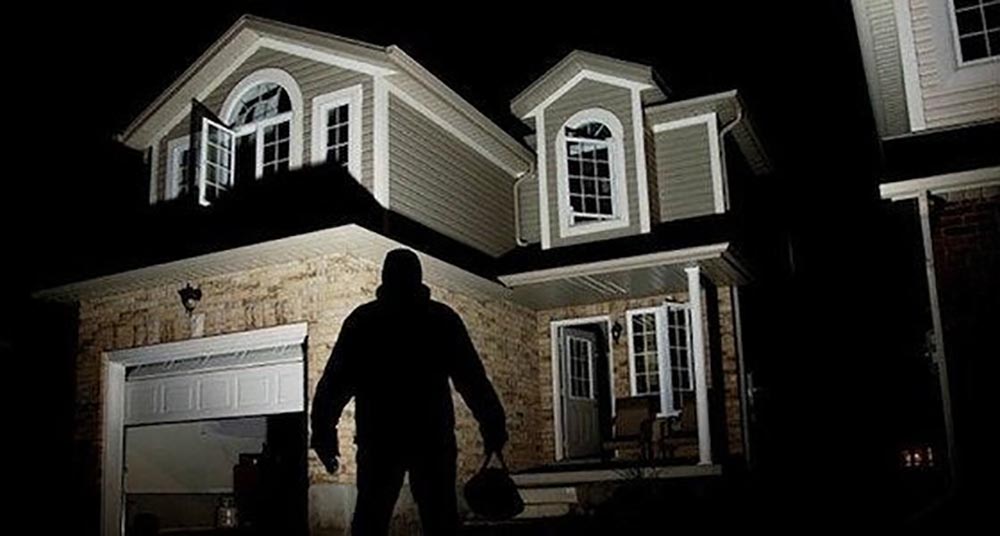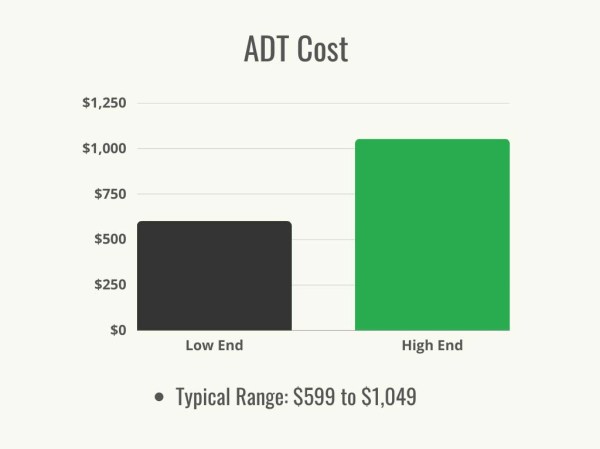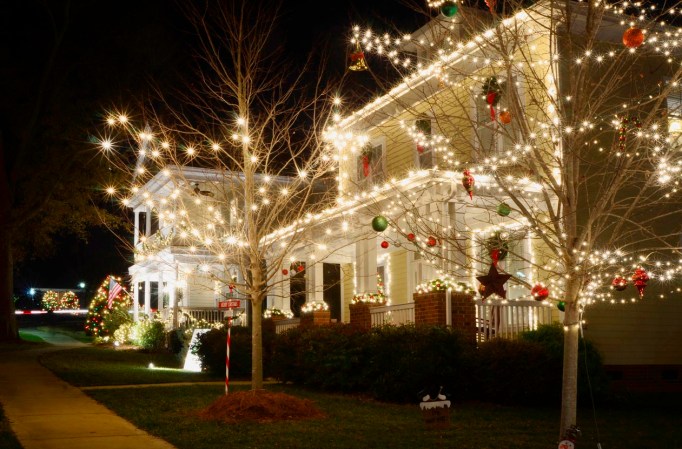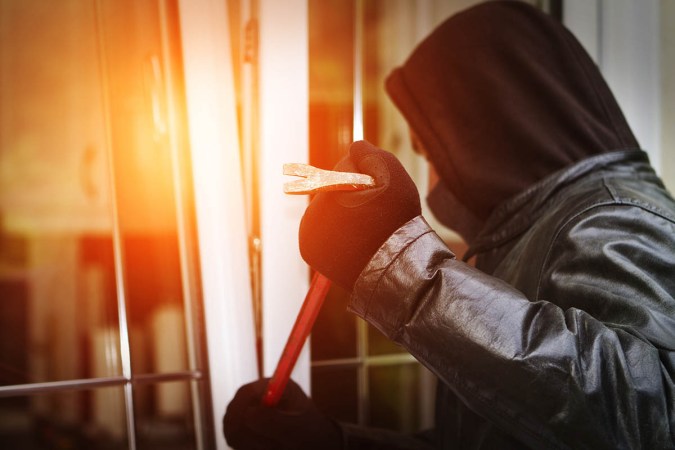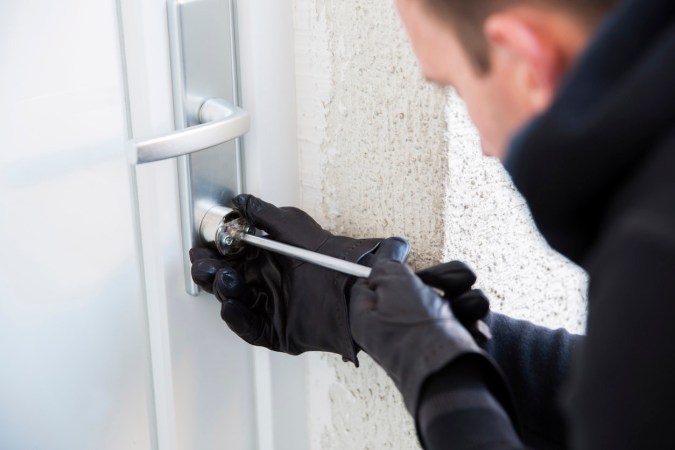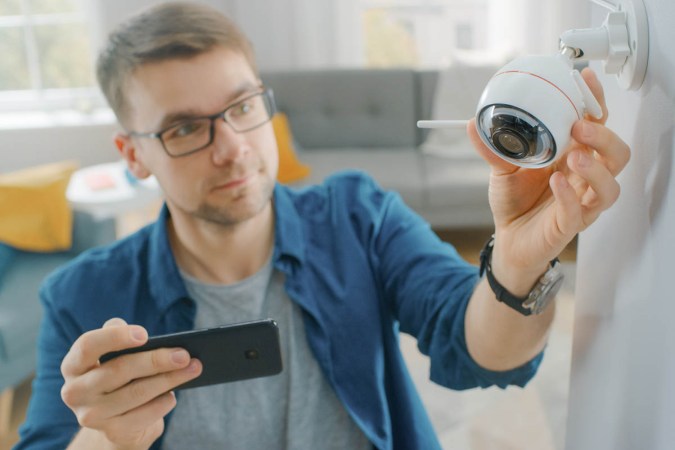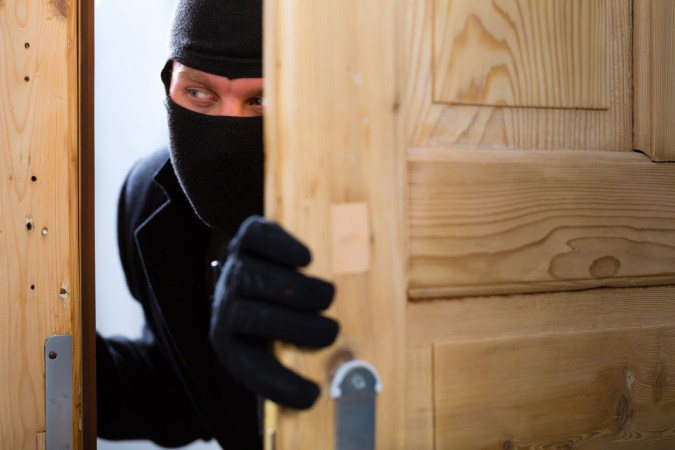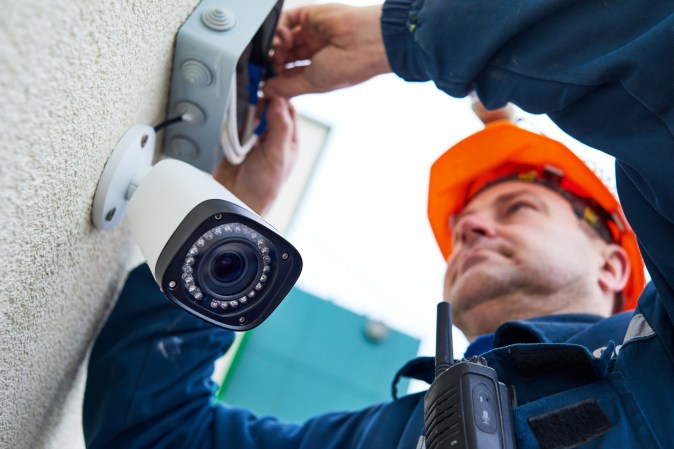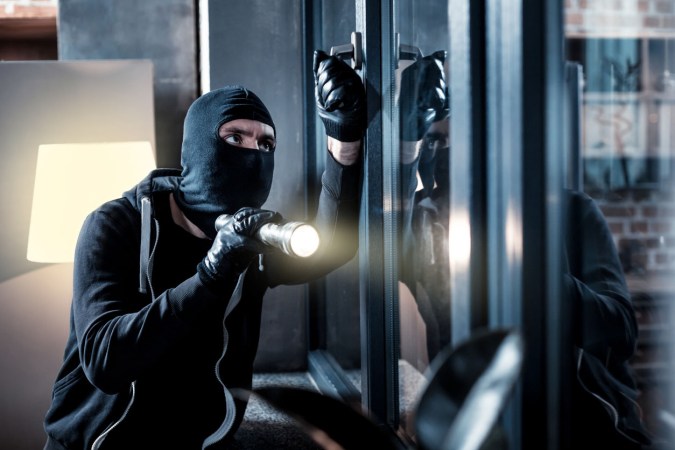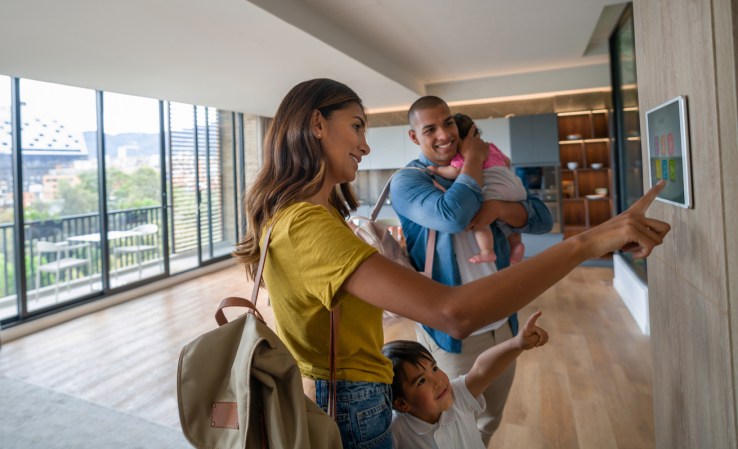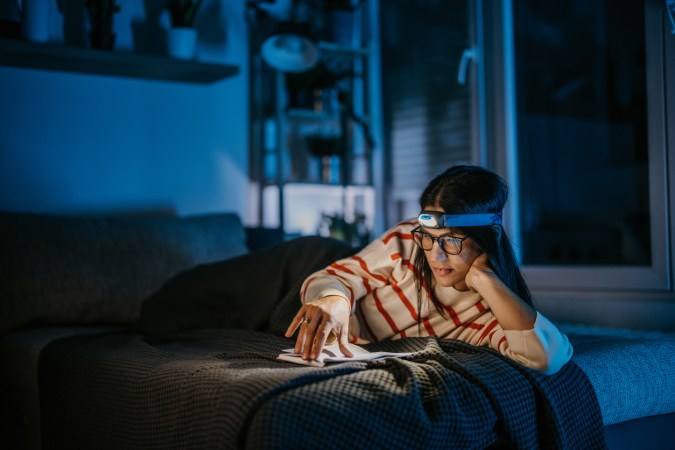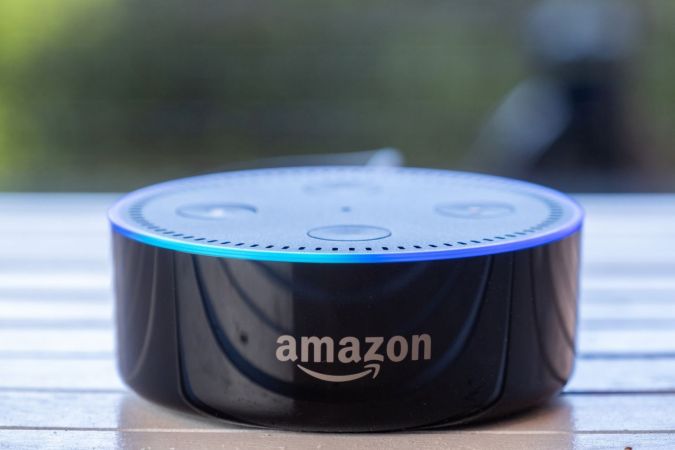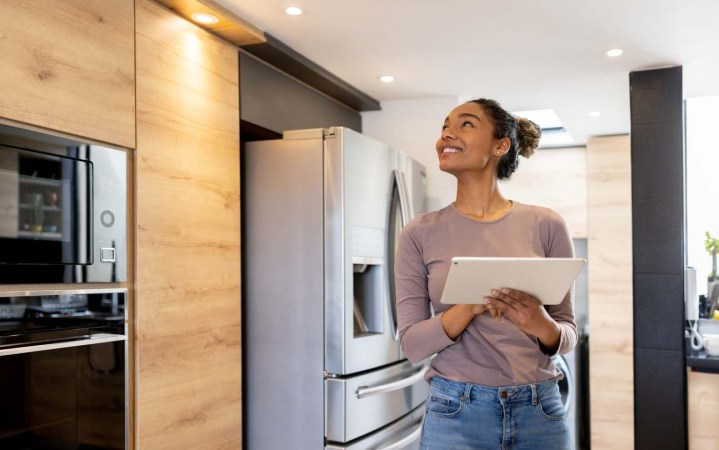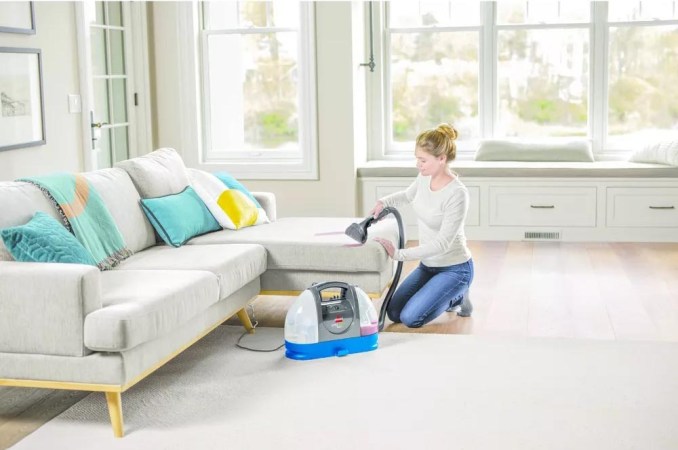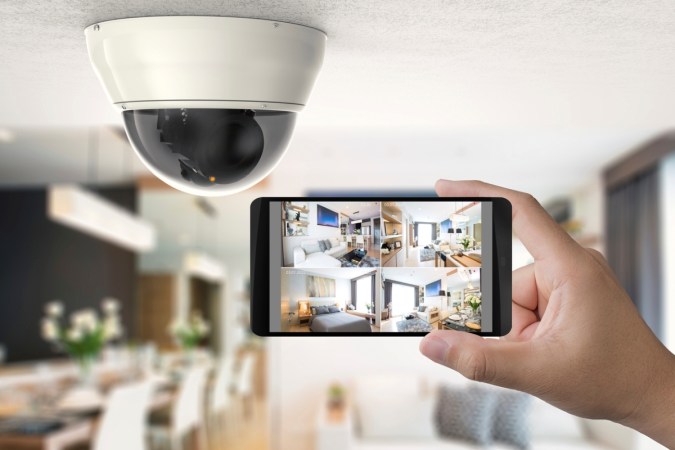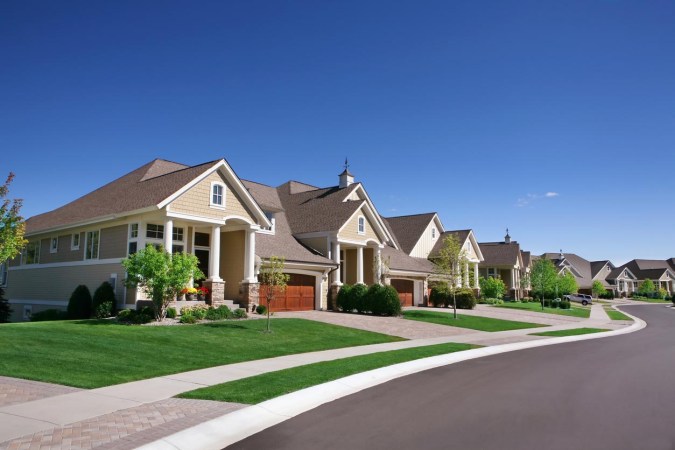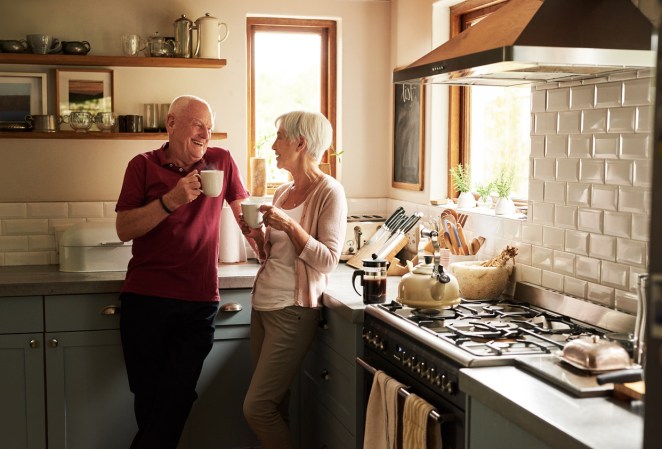We may earn revenue from the products available on this page and participate in affiliate programs. Learn More ›
The revolution brought on by wireless technologies, smartphones, and mobile apps has had a major impact on the residential security system market. A software-supported security system can send homeowners a text message every time a door or window is opened. It can stream live video or send still images of what’s happening in the garage, living room, backyard, or wherever a security camera is deployed. It’s even possible for a user to be alerted before a break-in, the moment the burglar pulls into the driveway. And that’s not all: Home security can be integrated with home automation so the same interactive service can give a home the appearance that someone is home. Lights and TVs can be turned on and off at random intervals, or according to a strategic schedule.
All of this innovation means customers have more options than ever when it comes to securing their homes. However, it can be difficult to parse out what features are truly necessary and when old-fashioned, common-sense approaches can be just as effective. A brief dive into some home security basics can empower homeowners and renters to make the right selections for their homes.
What is a home security system? What are some types of equipment included in a home security system?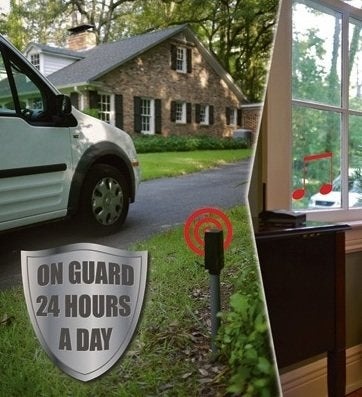
The best home security systems (such as Vivint and ADT) deliver peace of mind in more ways than one. At the most basic level, security cameras, door sensors, and motion sensors can be used to monitor activity around the home. Some brands also carry additional sensors that alert to hazards such as fire, elevated carbon monoxide levels, and water leaks.
Customers can also decide whether they’d like their system to include professional monitoring. With this service, representatives from the security company will be on call to take action if the system alerts to an emergency. Otherwise, customers who prefer DIY monitoring can have alerts sent to their smartphones so that they can assess the situation and call the authorities themselves if necessary.
Tim Rader, senior director of product development at home security company ADT says, “I recommend having a 24/7 remote home surveillance system that has features beyond video and motion-sensor capabilities, such as smoke, fire, and carbon monoxide detection, as well as professionally trained rapid response teams. These features are especially useful if you travel or are away from home often.”
Entry Sensors
Entry sensors alert residents when someone enters or exits the home. These typically come in two pieces: one sensor is placed on the door itself, and the other piece goes beside it on the frame. The two sensors are connected by a magnetic field. When the door is opened the field is broken, which triggers the device to sound a home security alarm.
There are also a few types of window alarm sensors. One is similar to a door sensor and will go off when the window is opened. Glass-break sensors can also be used on windows or doors with glass panes. They are fitted with microphones that can detect the sound of glass breaking, in which case an alarm will sound. It’s generally recommended for customers to place sensors on all ground-floor doors and windows, and any upper-floor windows that an intruder would be able to access.
Motion Sensors
Motion sensors can be used to alert residents to activity inside the home. They use either infrared or laser technology to detect the presence of people moving through the space and will notify the customer either by an alarm or a smartphone notification. Advanced motion sensors may be able to recognize faces or distinguish between people and animals. Outdoor motion sensors are also often connected to flood lights to scare off prowlers.
Security Cameras
Security cameras, whether indoor or outdoor, are a core component of any home security system. Depending on the system, home security cameras may activate when they detect motion or they may record constantly. If the camera picks up on unexpected activity, it will notify the customer or the professional who is monitoring the home.
There are many types of security cameras for homes on the market, so customers will need to make decisions about video quality, how much backup storage they need for footage, and whether they want special features such as automatic panning or voice integration. A professional can also provide advice about how many security cameras are needed for a particular home.
Doorbell cameras can be especially useful for monitoring porch activity, whether it’s verifying a guest’s identity before the door is opened or checking to see if a package has been delivered. Many also come with voice capabilities so residents can speak to whomever is at the door.
Environmental Sensors
Unfortunately, burglars are not the only threat facing homes. Fires, flooding, and carbon monoxide leaks are valid concerns, so many security systems offer sensors that also monitor for these possibilities.
Smart smoke detectors go above and beyond traditional models by integrating with smart-home systems and sending notifications to a customer’s smartphone. Smart carbon monoxide detectors plug into the wall and will sound an alarm and send smartphone alerts if carbon monoxide is detected, which is a potentially life-saving feature. Finally, flood detectors can potentially save hundreds of dollars of water damage from occurring. If a pipe or appliance springs a leak while a customer is away from home, they’ll get a notification alerting them to the problem. Some of these sensors can even be programmed to shut off a home’s water supply if they sense a leak.
Additional Equipment
Customers have almost endless equipment options that go beyond a basic home security camera system. Panic buttons can be installed in multiple locations throughout the home to provide reassurance that help can be summoned at any moment. Flood lights can be used to illuminate the home’s exterior to deter criminals. For those who prefer not to hand out house keys to housekeepers or other service providers, smart locks make it possible to lock and unlock the home remotely.
Security systems often also include smart-home equipment or features that are not directly security-related but can provide added convenience. The best home thermostats with smart capabilities make it possible to program the home’s temperature and avoid wasting energy heating or cooling the home unnecessarily. Smart-home security equipment may be especially useful and provide added independence for those who have limited mobility or are aging in place. Smart lights, garage doors, and even appliances can be controlled from one place using a smartphone or system hub.
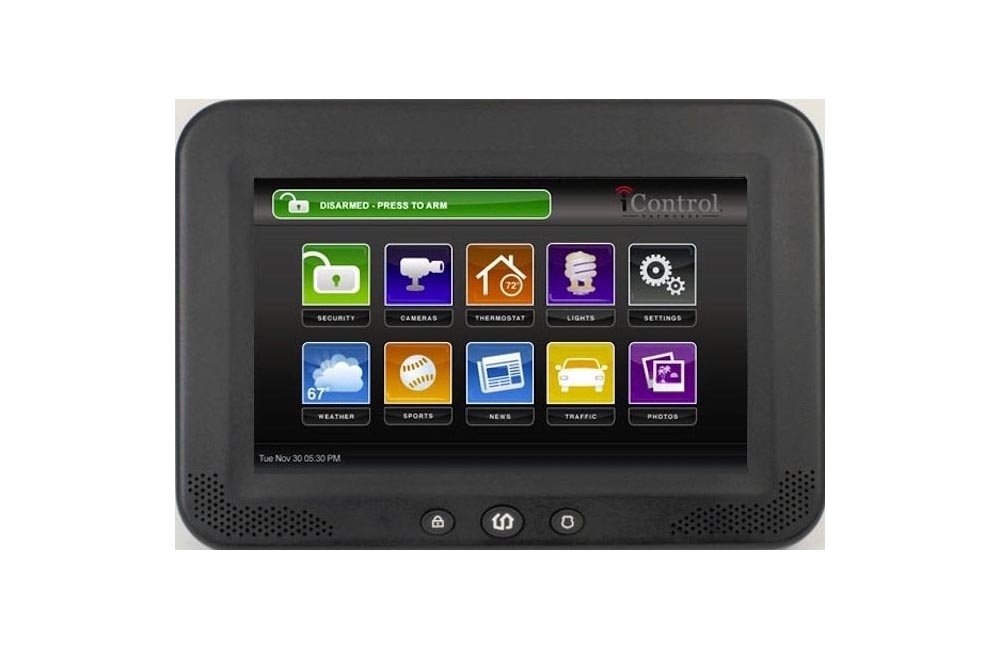
How to Choose the Best Home Security System for You
While the wide variety of products on the market makes it possible to find a security system for just about any home or budget, it’s also easy to be overwhelmed by all the options available. Customers will want to think carefully about what features are truly necessary and choose a system that meets the needs of their home and their own personal preferences.
Self-Monitoring or Professional Monitoring
Most home security companies offer both self-monitoring and professional monitoring. With self-monitoring, customers are simply alerted via a notification on their smartphone if their security system picks up unusual activity. According to Safehome.org, self-monitored systems have eclipsed professionally monitored ones in popularity in recent years. This option does have many pros, as it is typically either low cost or free, and it affords the customer ultimate control in making decisions about their home. However, this also means that if their phone dies or they miss a notification, there is no backup.
With professional home security monitoring, customers have the reassurance that in the event of an emergency, a representative from the company will contact the authorities immediately if they can’t reach the customer. “I recommend professionally monitored systems, as they’re equipped with 24/7 surveillance by professionals who will [alert] emergency services for the homeowner,” says Rader. “While unmonitored systems may be more affordable, it will leave the homeowner responsible for monitoring the home and calling the authorities when the system goes off.”
DIY or Professional Installation
Many security companies now carry DIY home security systems that don’t require professional installation. Frontpoint Security, for example, offers packages or individual pieces of equipment that can easily be installed by the homeowner or renter. Installing the system independently can save customers several hundred dollars and make them more knowledgeable about how it works.
On the other hand, letting a professional install the equipment ensures that everything is up and running correctly. Professionals know where to place security cameras for optimal performance. They’ll also be able to tell right away if a piece of equipment isn’t working properly—which is highly preferable to the customer making this discovery while an emergency is already underway.
Wired or Wireless
Customers will also need to decide whether they want wired or wireless security cameras. For wireless home security cameras, installation is as easy as using a sticky mount to attach the camera to the wall and plugging it into the nearest outlet (some may alternatively run on a battery and are completely wire-free). Then, all that is required is to connect the camera to the home’s Wi-Fi. Wireless home security systems, such as those offered by SimpliSafe, are much easier to install than wired components, which makes them the best apartment security systems.
Wired camera installation is more likely to be a job for a professional. The camera will need to be connected to the home’s internet via an ethernet cable. This often requires running wiring through walls. While the added time and cost of security camera installation is a con, these cameras tend to be more reliable than wireless and are less vulnerable to hacking.
Home Automation
While not strictly limited to security in its functionality, home automation often goes hand in hand with security systems. For one, many security brands integrate with smart-home systems such as Alexa or Google Home so that customers can “ask” these systems to turn on outdoor flood lights, view security camera footage, and more. Additionally, smart locks, thermostats, lights, and other home features can be automated to save time and allow customers to control these devices even when they’re away from home.
How much do home security systems cost?
Home security costs are typically not billed as a lump sum. First, there is an initial charge for the equipment as well as the installation if it is being done by a professional. It can run from about $120 for a basic installation (or less than half if a customer installs it themselves) to $600 or more for a full-feature system with specialized sensors and wireless smoke and carbon monoxide detectors.
The other cost for customers to consider is the monthly service charge, which can vary widely depending on the level of monitoring a customer chooses. While these costs are not insignificant, many find that the protection they afford makes home security systems worth it.
“Home security systems help prevent your home from burglaries which, according to FBI crime statistics, occurred an estimated 1.1 million times in 2019 in the U.S., amounting to roughly $3 billion in property losses,” says Rader. “And being the victim of a burglary can have a far greater impact than simply the value of any stolen items—it can also cause emotional stress. Having an alarm system can help at the very least give peace of mind, especially when you’re traveling or away from home.”
Additional Home Security Tips
Burglaries have been dropping steadily for 20 years in the U.S. according to the Federal Bureau of Investigation (FBI), but that’s small consolation to those who are victims of break-ins every year. Fortunately, there are a number of low-cost ways to improve home security that renters and homeowners can implement in addition to installing a home security system.
Keep windows and doors locked.
It may be one of the most obvious home security tips, but the simplest way to improve home security is to upgrade locks on all doors and windows—and use them! Old or unreliable locks can be upgraded to smart locks or backed up with strike plates and deadbolts. Windows often have weaker locks than doors do, so installing window bars can provide an extra layer of security. It’s also a good idea for a resident to rekey locks right away when moving into a new home as it’s impossible to know who has keys to the old lock.
Keep the exterior well lit and maintained.
If they can help it, burglars typically prefer to target homes where there is plenty of darkness to cover them as they find a way inside. According to Rader, “Ensuring the home is well lit is a simple way to deter burglaries. I recommend installing motion-sensor lights outside or using smart lights inside that you can have automated to turn on and off at certain times.”
It’s also a good idea to prune or replace large foundation plantings so intruders cannot hide behind shrubs while prying open a window or door. Hidden home security cameras are also more likely to pick up an intruder’s physical appearance if nothing is blocking them.
Join or start a neighborhood watch.
A smart way for residents to keep their home safe is to join or start a neighborhood watch group. Such groups are effective crime deterrents because they encourage residents to be vigilant and to call the police whenever they see something amiss. They also exchange information about crime in the neighborhood and work with police to improve response times.
Don’t advertise your absence.
According to Security.org, about 72 percent of burglaries happen when nobody is home. When residents of a home go on vacation, they’ll want to make sure they do not leave evidence that the home is vacant. For one, it’s never a good idea to leave a note on the door indicating absence. It’s also worth residents asking a neighbor to collect the mail and any packages so it looks like someone is home. Additionally, putting interior lights, TVs, and radios on timers will create the illusion that someone is home when they’re not. “When you’re away, close your curtains and windows to ensure that no one can see through your home,” Rader adds.
This extends to social media as well—individuals will want to hold off on posting vacation photos or publicly sharing the dates they’ll be out of town until they return as it can be an open invitation to potential thieves.
Secure your car.
It’s important for a home’s residents to keep their car doors locked and windows closed. It’s never a good idea to leave valuables, especially electronics or money, in the car. If it’s unavoidable, the car’s owner will want to cover up valuables or put them in the trunk or glove compartment. It’s also a good idea to use a locking device on the steering wheel in high-crime areas.
Secure your garage and shed.
Garages and sheds are sometimes overlooked when it comes to home security. It’s a good idea for a homeowner or renter to keep garage doors closed, even while at home, so thieves are not able to spot items they may want to steal. Valuable items, such as expensive bicycles and grills, can be locked to a very heavy object with a chain and padlock. Depending on the type of garage door they have, residents may be able to drill holes in garage door tracks and insert a padlock or bolt to prevent the door from being forced open. They can also install a hasp and padlock on shed doors to keep them secure from thieves.
When engaged in a home improvement project, it’s also important for homeowners not to leave ladders in sight since they are an invitation to burglars. Similarly, it’s inadvisable to leave tools lying about that might be useful to an intruder, such as a hammer or pry bar.
Although many home security basics may seem obvious, they can be easy to overlook. Homeowners and renters who combine the top home security tips with the installation of a highly rated home security system can enjoy better protection and peace of mind, both while at home and while away.
